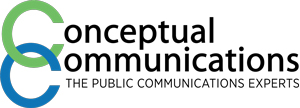When it comes down to it, accessibility is about making sure our readers feel truly included when interacting with us online. Whether they use a screen reader, don’t speak English well, are neurodivergent, or interact with digital content differently than you or I, reducing barriers and increasing access to information should be at the heart of what we do.
That’s why, as communicators, it’s our job to create messages that are accessible to everyone, every time. While the below tips are most relatable for website copy, they can also be applied to other platforms, like social media, presentations, and word documents. Here are our top three tips for creating accessible copy:
Keep it Concise
8.25 seconds.
That’s the average attention span of an adult and how long you have to create a connection. Don’t waste time by cluttering your message with extra and hard-to-understand words; keeping it simple and concise is the name of the game in 2024.
This includes:
- Eliminating industry-specific terms (unless that’s who your audience is)
- Keeping words to three syllables or less
- Using active, not passive, voice
- Using shorter sentences
Space Out Hyperlinks
Hyperlinks are most accessible when they’re written in full sentences and are distinguishable in two different ways. Whether they’re bolded, highlighted, italicized, a different color, or underlined is up to you. Something you may not have considered, though, is the need to space them out. For example, individuals who use a mouse but have tremors may find it difficult to select the correct hyperlink if there are multiple in a list. To make them accessible, we suggest separating links with an extra space or line to act as a buffer.
Avoid Directional Phrases
While it’s helpful for some users in certain situations, using directional phrases like “the box to the left” or “click the blue button” aren’t helpful for users who are limited sight or blind, rely on a screen reader, or mobile users who are using a condensed version of your site that may have shifted the layout of the webpage.
Don’t say this: “Click the blue button at the top of our page to learn more about our services.”
Say this: “Click the ‘Our Services’ main menu item to learn more about how we can serve you.”
Tip: If you’re describing or referencing an image or other visual element on your page, consider labeling the element, using verbiage like “Figure 1 illustrates this concept,” and including descriptive text.
